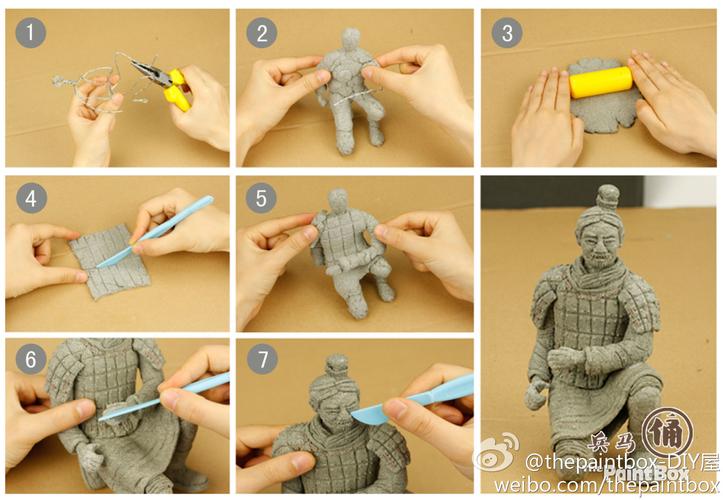
# Were the Terracotta Warriors Made of Clay?
About Emperor Qin's Terra Cotta Army
The Terracotta Army, an awe-inspiring collection of life-sized statues buried with China's first emperor, Qin Shi Huang Di, is often described as being made of "clay." While technically accurate, this simplification doesn't fully capture the complexity of the materials and craftsmanship involved in their creation.
Unpacking the Composition: Beyond Simple Clay
The Terracotta Army warriors weren't molded from ordinary clay readily available on any riverbank. Instead, they were crafted from a specific type of clay-rich earth found in the region surrounding the mausoleum, near Xi'an. This earth, known as loess, is a fine-grained sediment deposited by wind over millennia. Loess is characterized by its yellowish hue and its ability to hold intricate details when molded, making it ideal for creating the warriors.
The Process: From Earth to Eternal Guardian
The creation of each warrior was a multifaceted process involving multiple stages and materials:
- Extraction and Preparation: Loess was carefully extracted from the earth and then mixed with water to achieve a workable consistency.
- Molding and Assembly: While some smaller parts may have been made using molds, the warriors' bodies were largely crafted using a modular system. This involved creating individual sections, such as torsos, legs, and arms, which were then assembled. The hollow interiors of these sections helped prevent cracking during firing.
- Detailing and Individuality: Once assembled, skilled artisans meticulously carved individual features into each warrior – unique faces, hairstyles, armor details, and hand gestures – transforming them from generic figures into a diverse army.
- The Kiln's Embrace: After drying, the warriors underwent a crucial transformation in kilns. These massive, purpose-built kilns fired the figures at temperatures reaching up to 1,000 degrees Celsius (1,832 degrees Fahrenheit). This high-heat firing hardened the loess, turning it into the durable terracotta we see today.
- Pigments of Life: Finally, the warriors were brought to life with vibrant paints. Though little of the original coloration remains due to exposure to the elements, evidence suggests the army was once a dazzling spectacle of reds, greens, blues, and other hues.
More Than Clay: A Legacy in Earth and Fire
To label the Terracotta Army as simply "clay" underestimates the sophistication of their creation. These enduring figures are a testament to the mastery of Qin Dynasty artisans, who transformed humble earth into an enduring symbol of power and artistry through a complex process of sculpting, firing, and painting. Their legacy endures not just in their form but also in the ingenuity and dedication that brought them to life.
FAQs
Q: Why did Emperor Qin Shi Huang choose to be buried with an army? A: Qin Shi Huang believed that his power and accomplishments in life should follow him into the afterlife. The Terracotta Army was intended to protect him from enemies and maintain his authority in the next realm.
Q: Are all the Terracotta Warriors identical? A: No, although they share a common style, each warrior possesses unique features, reflecting the diversity of the Qin army. This individuality showcases the incredible skill and attention to detail of the artisans who created them.
Q: How was the Terracotta Army discovered? A: The Terracotta Army remained hidden underground for over two millennia. It was rediscovered in 1974 by local farmers who were digging a well near the emperor's tomb mound. The accidental find astounded the world and opened a window into the grandeur of the Qin Dynasty.